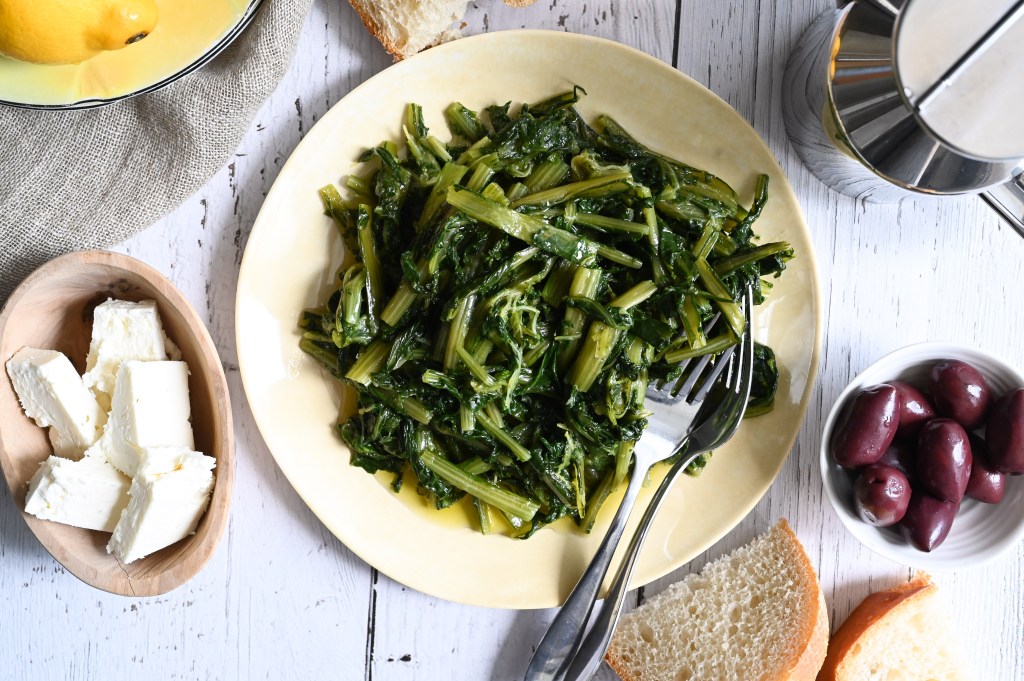
Dandelion leaves are a Greek recipe staple. Delicious, nutritious, and depending on how you get them…free!
There are some things which are simply, quintessentially, Greek. Your mother insisting that you not leave the house with wet hair, to avoid pneumonia, is one. Having several members of your family with the same first name, sometimes paired with the same last name, is another. Calling anyone who is even remotely related to you, your cousin, is yet another. And horta-picking…well, that is one, perfect, Greek thing.
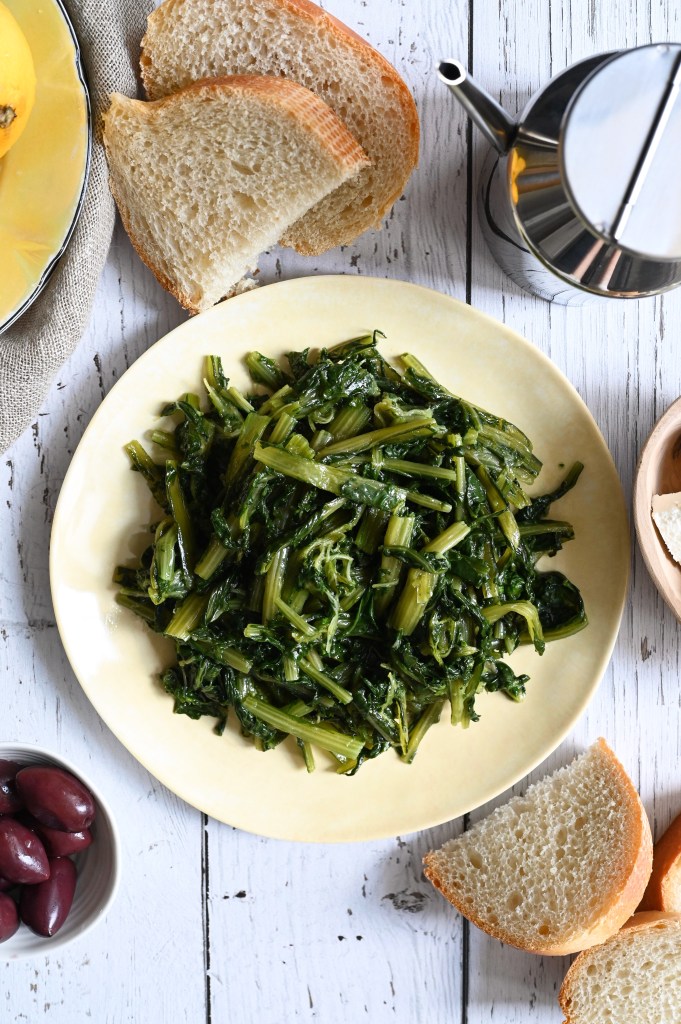
For most non-Greek families, a drive is just that; a way to get from one place to another. Not for our family. Growing up, if it was the right time of year (early May to the end of June), a drive out to see Costa Pappas (no, not that Costa Pappas…the other one), often meant a little pit stop by the side of the road to gather lunch. Yes, that’s right. While our father drove, our mother, who must have an embedded horta-radar, would gaze out the window, not to take in the scenery, but to see if she could spot some wild dandelion greens, ready to be picked. She often did. And when she did, the car was stopped, and out of the trunk came the always available horta-picking tools; sharp pairing knives and plastic garbage bags. High class. Her radar must have a far-reaching range because we would then trek out into the middle of nowhere to start the picking. Of course, these spontaneous trips to the field were complemented by the many occasions when horta-picking was a planned activity. As a result, a possible exchange with a friend from school would have gone something like this:
Either of us: Hi Jane. I love how your long, blond, hair looks today.
Jane: Thanks. It’s nothing. I just left the house right after taking a shower and the wind dried my hair, giving it this wavy look.
Either of us: Really???!!! What are you doing this weekend? (fully expecting that she would be hospitalized)
Jane: Probably going to the theater with my parents, and then going out for sushi or something. What about you?
Either of us: Oh. We’re going to be picking weeds, so that we can eat them. We will be doing this with our parents, aunts, uncles and about 10 cousins.
Truth is, we were horrified by this practice growing up. Often, holding open the garbage bags so that our parents could toss in weeds, we would look around furtively, fearing that someone we knew would spot us. But who would spot us? Horta-picking happened in remote places, far from automobile exhaust, dog poop and pesticides or fertilizers. This was organic harvesting at its best. When the fields were particularly abundant, our parents told us to lay the bags on the ground, and handed us knives. We were taught to find a nice weed, insert the knife into the ground, and cut in a circular movement; this would cut the dandelion greens, but leave the root intact; perfect for future growing (not that weeds actually need the help). It was pretty easy work and there were times when, in spite of ourselves, we took pride in finding the perfect weed.
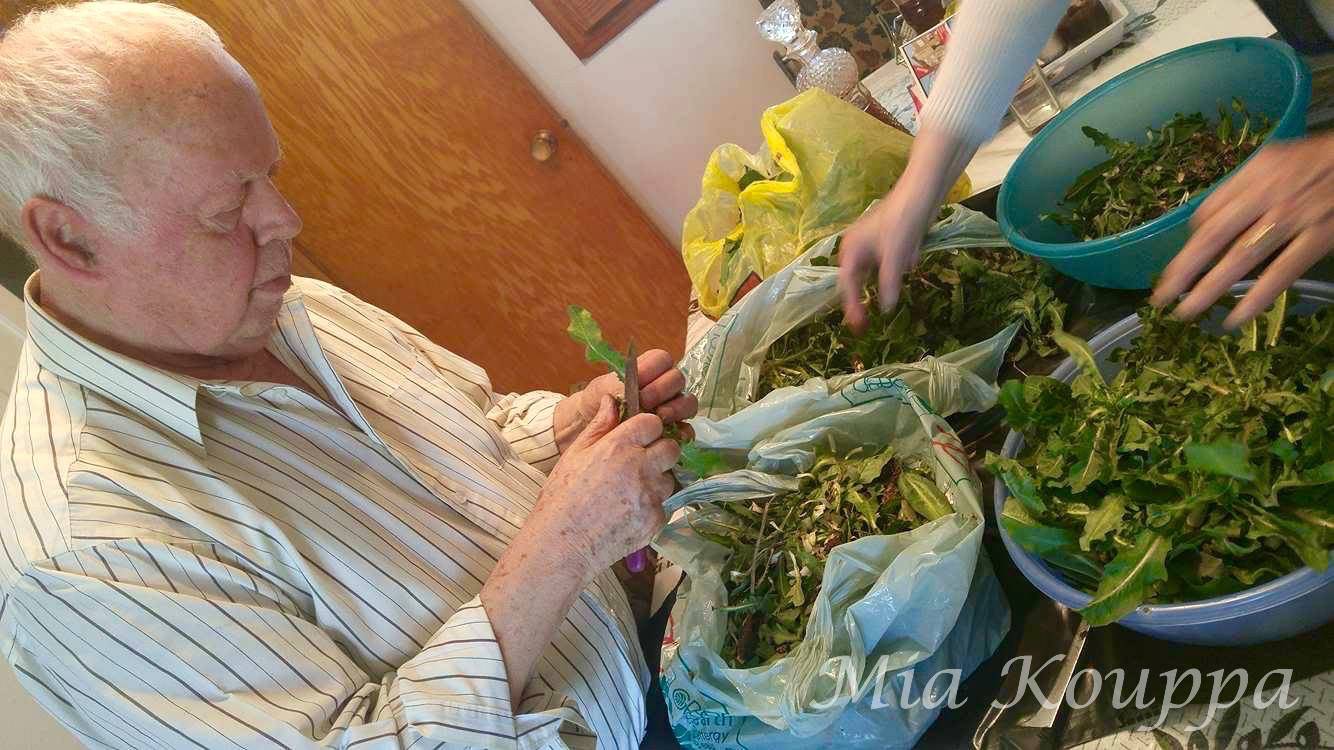
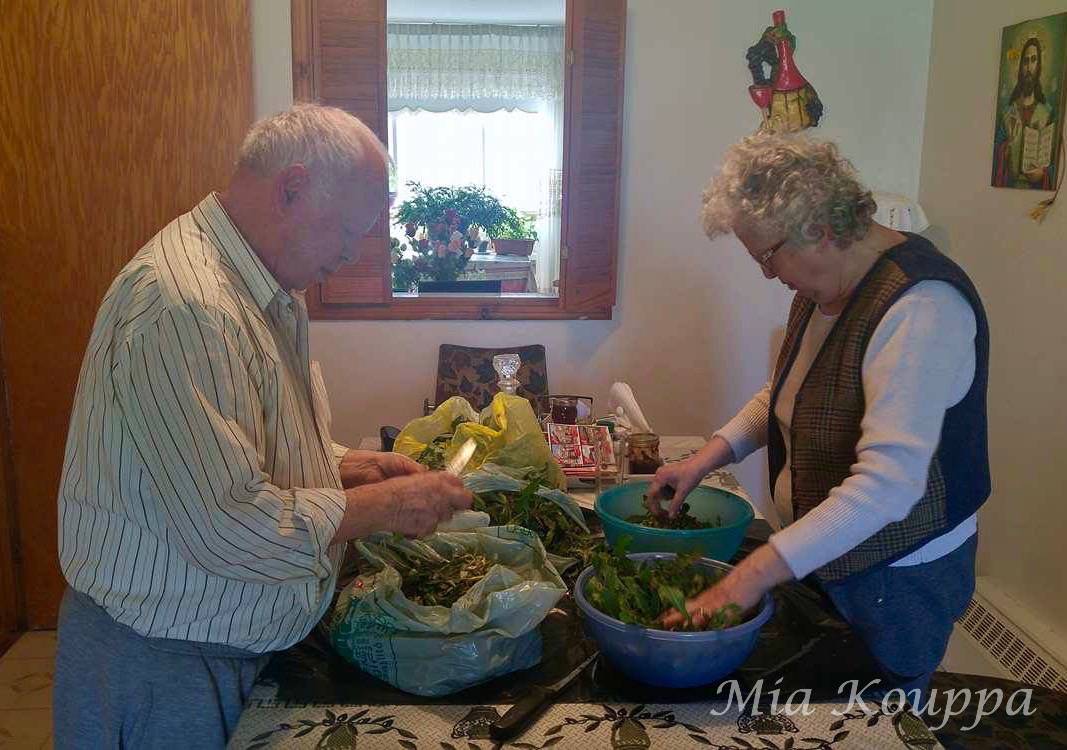
Despite the fear of being seen, the picking part was easy. The cleaning and washing of the accumulated horta however, was another story. Depending on the quantity of our bounty, this process could take the better part of an afternoon. We would sit on the balcony with our parents, and often other family members, sorting through the horta. We would carefully cut away any pieces which were brown or wilted. Any accidental roots were also discarded. The remaining greens were then washed, and then washed again, and again, and again. The washing continued until the water in which the greens were washed was finally, ultimately, clean.
Today, our parents still plan their horta-picking excursions, and today, we actually welcome an invitation to join them. As we have gotten older, our fragile egos have been replaced by pride, embracing horta-picking as an integral part of our culture. We acknowledge that there is beauty in knowing how to live off the land, so to speak. We also know that horta are delicious, and so very nutritious. Loaded with vitamins A, K and C, high in fiber, and very low in calories, they are a peppery delight which you should definitely try to incorporate into your diet.
Helpful hints:
Horta translates into weeds, and in Greek, if you are vegetarian you are called a hortofaga, which literally means weed-eater. Isn’t that a funny word? The term horta is often used to describe any wild greens, and could include wild spinach, nettles, beetroot leaves and many other things. Here, as in our parents’ home, horta refers to wild dandelion greens.
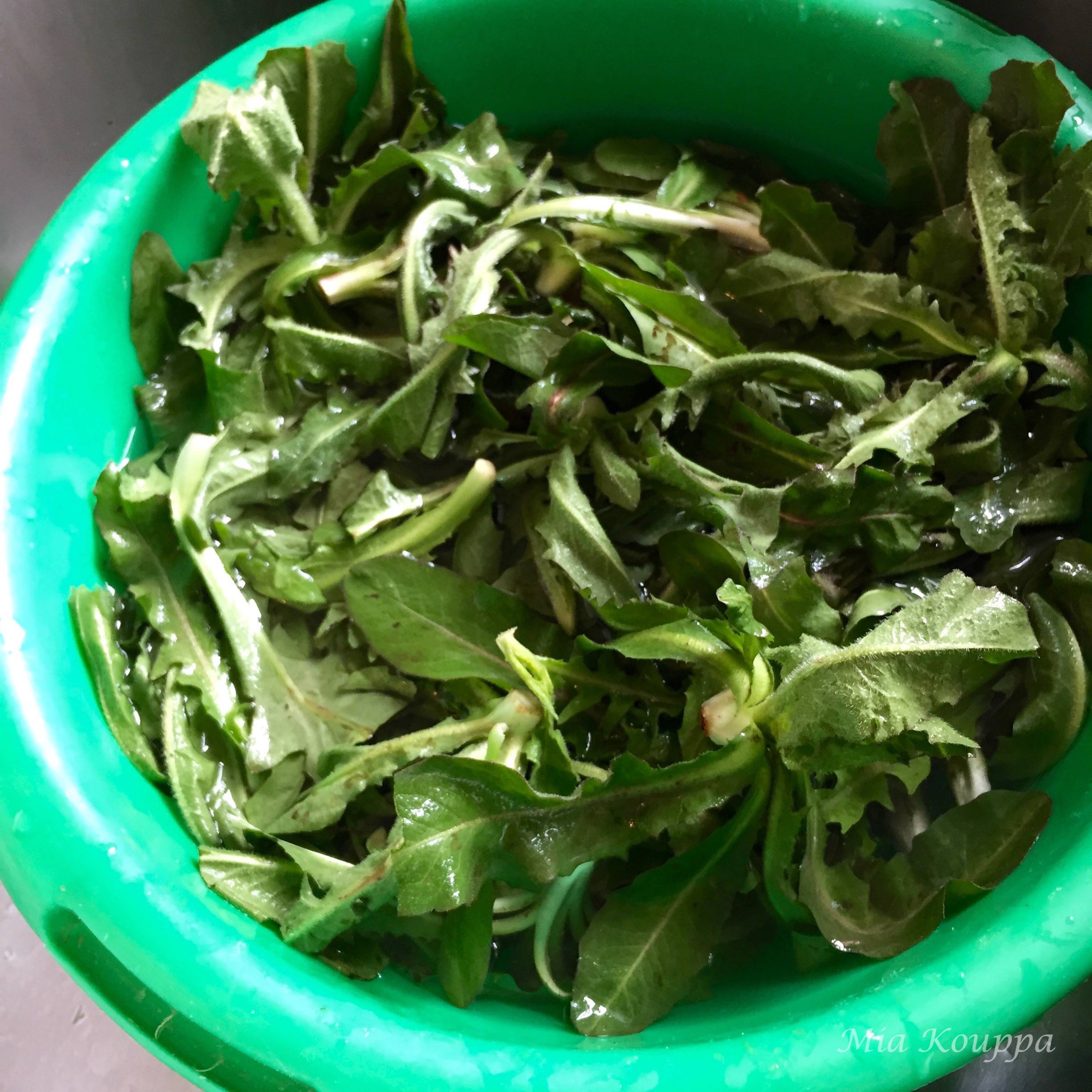
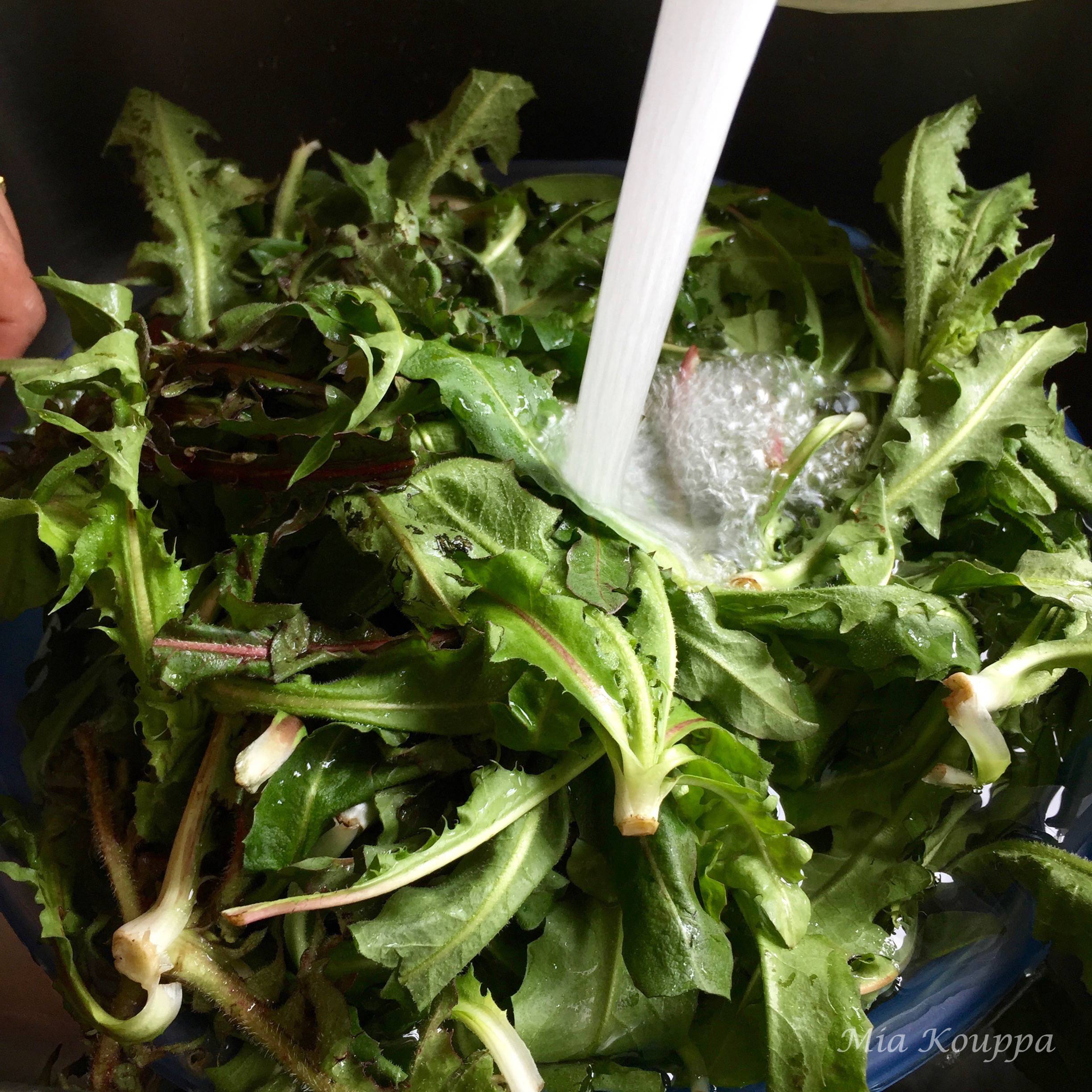
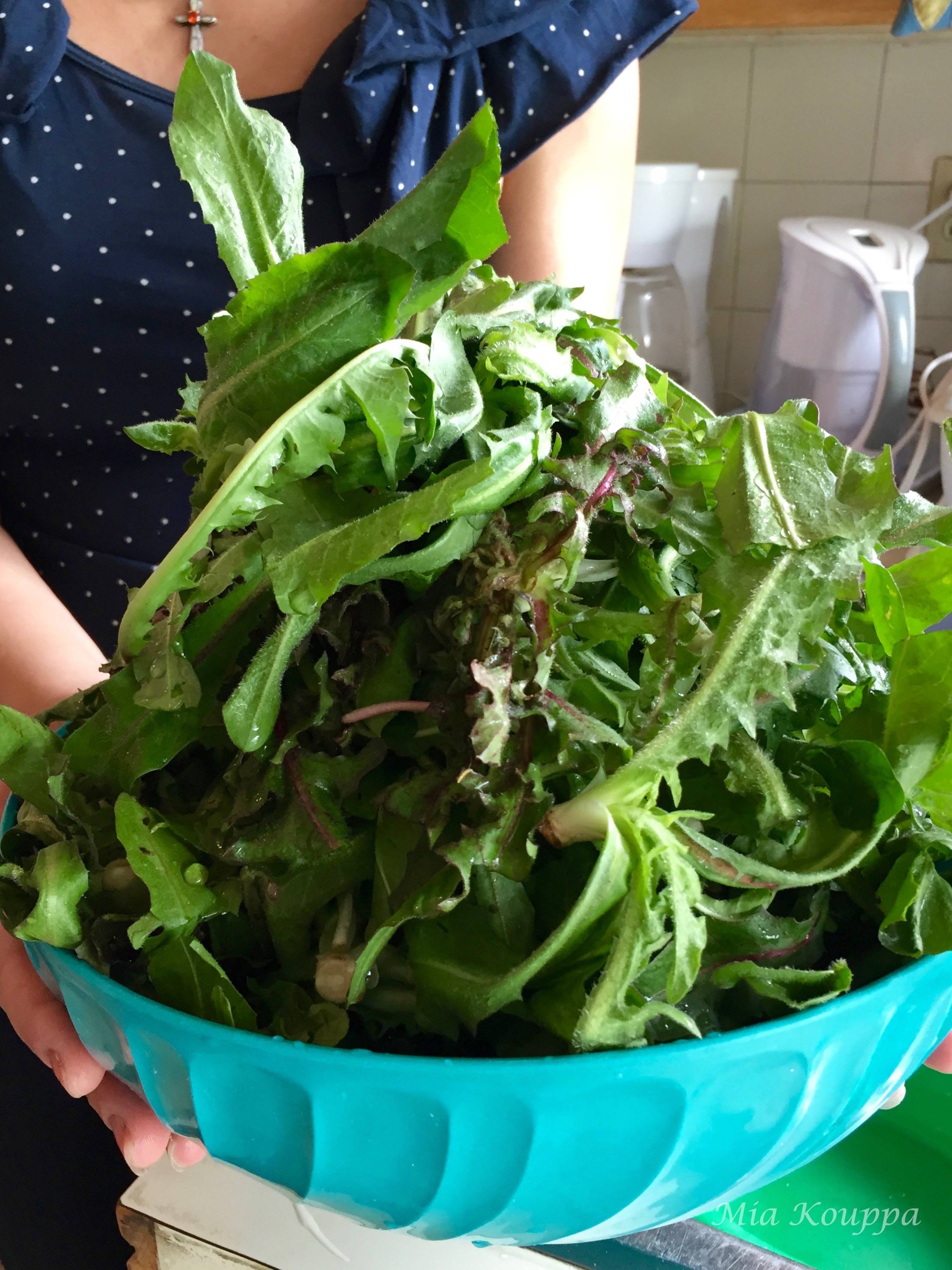
We realize that horta-picking isn’t for everyone. Perhaps you have never been taught how to pick the right weed, or don’t know where to go. Or maybe you would rather purchase your food in a grocery store. We don’t judge. Lucky for you, dandelion greens are often readily available in the produce section of many grocery stores. We don’t think that they taste nearly as good as those you might pick in an open field, but they are still delicious (and good for you).

Along with being more delicious, the horta you pick yourself will also be significantly dirtier than those at your local food market. Therefore, cleaning them can be quite an onerous task. If possible, especially if you have bags and bags full, clean your horta outdoors, and use a garden hose to fill and refill the bowls you will be using to clean the dirt and grit off of them (see description of how to do this in the recipe). The nice thing about doing this outside is that you can simply pour the dirty water into the garden or grass, or any potted plants. If you cannot clean your horta immediately after picking them, store them in the refrigerator for a few days.
Keeping horta fresh is key, especially if you have spent all day picking and preparing them. If you have more horta than you can possible eat, prepare them as described below and then store individual or family serving sizes in freezer bags, and freeze them. When you are ready for a taste, simply defrost a bag and immerse the horta quickly in a pot of boiling water, just to heat them through. They will be as fresh as the day you picked them!
As with most greens, when you cook your horta, the quantity you started off with will dramatically reduce in volume. Estimate that you will need about 1.5 pounds (680 grams) for 4 servings. This, of course, will depend upon whether you eat your horta as a meal or a side dish.
The time that it takes for your horta to cook will be largely dependant upon the freshness and size of your horta. Use the suggested cooking time in the recipe below as an estimate.
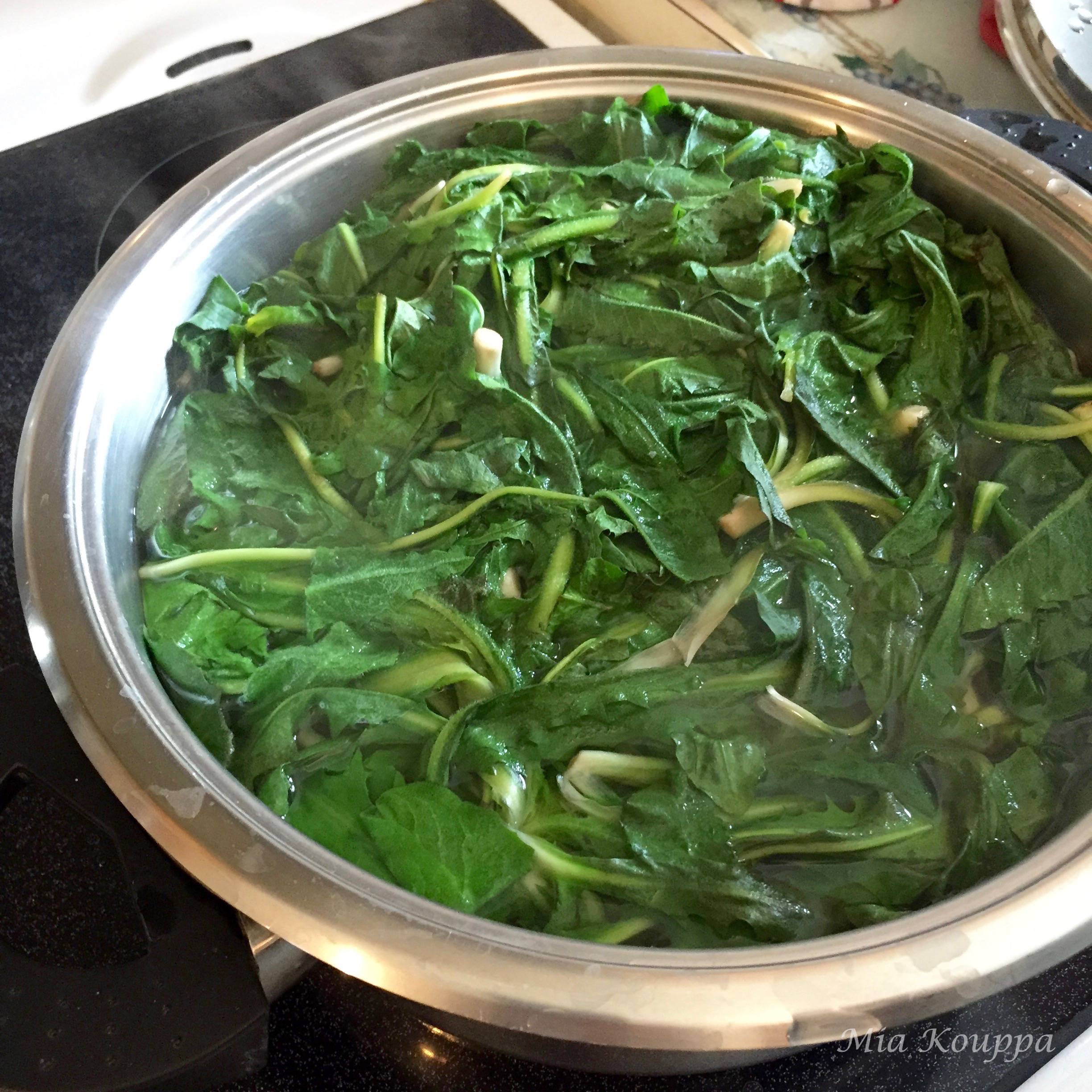
If you are using organic horta (either those you have picked yourself, or those you may have purchased), consider reserving the water that they were boiled in and drinking it as a tea. In the spirit of waste nothing, our parents reserve the cooking liquid to either drink as is, or they add some of it to soups or broths. As a drink, it is a bit bitter and therefore somewhat of an acquired taste, but it is apparently very good for you, so definitely worth a try. You can always try sweetening it with a bit of honey or sugar.
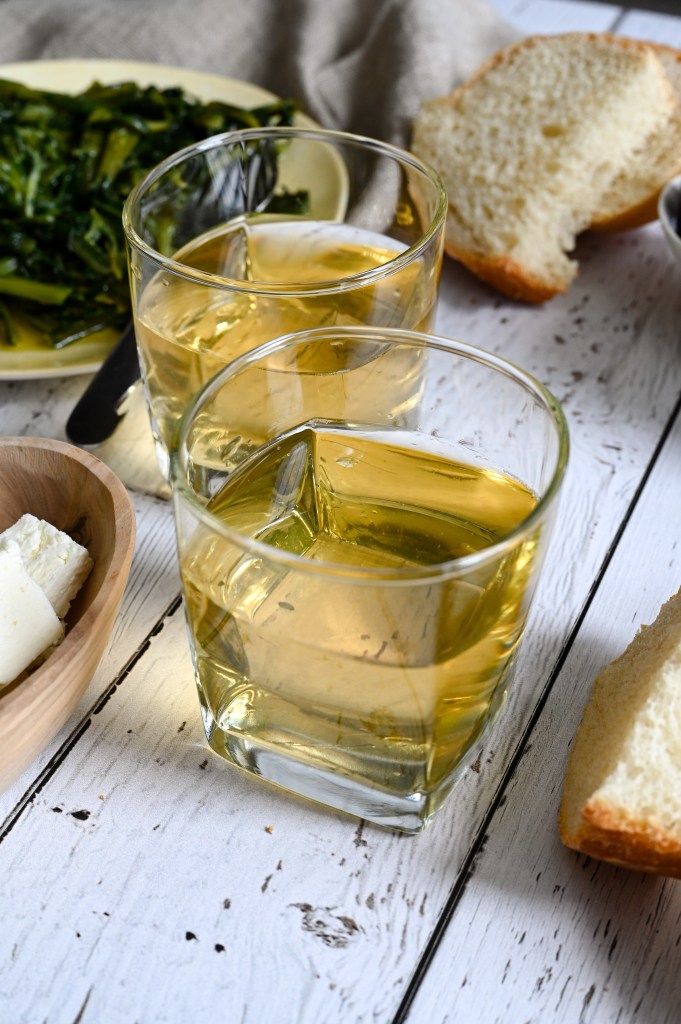
The best way to eat horta is with some lemon (or lime) juice and a drizzling of Greek olive oil. We feel they are most delicious at room temperature.
Looking for some more greens to enjoy? Try these:
Broccoli with olive oil and lemon
Dandelion greens and grilled bread

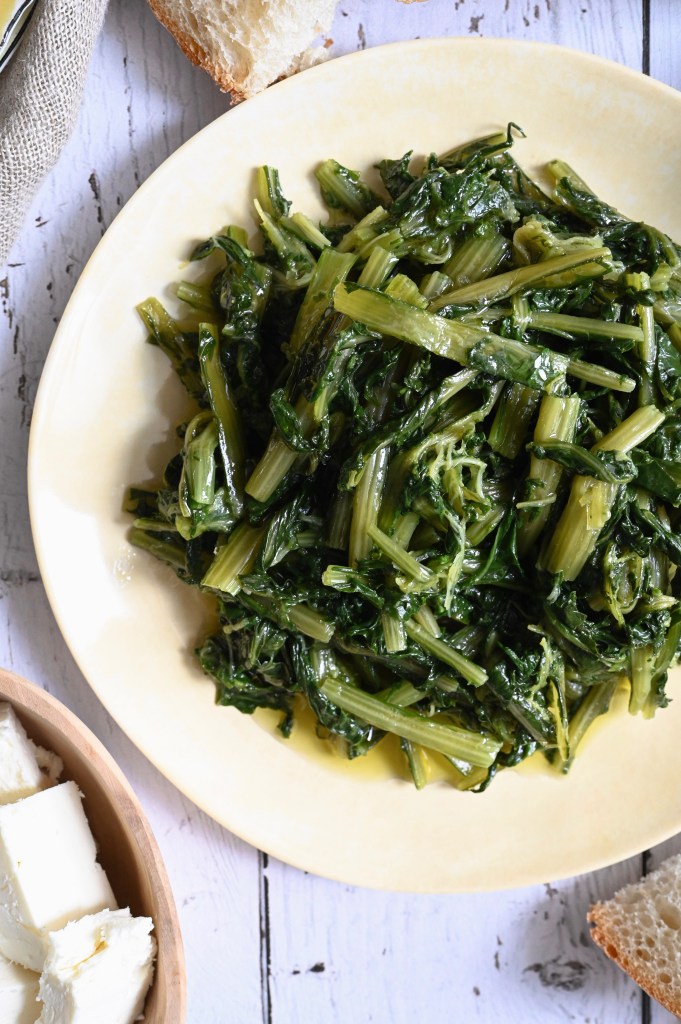
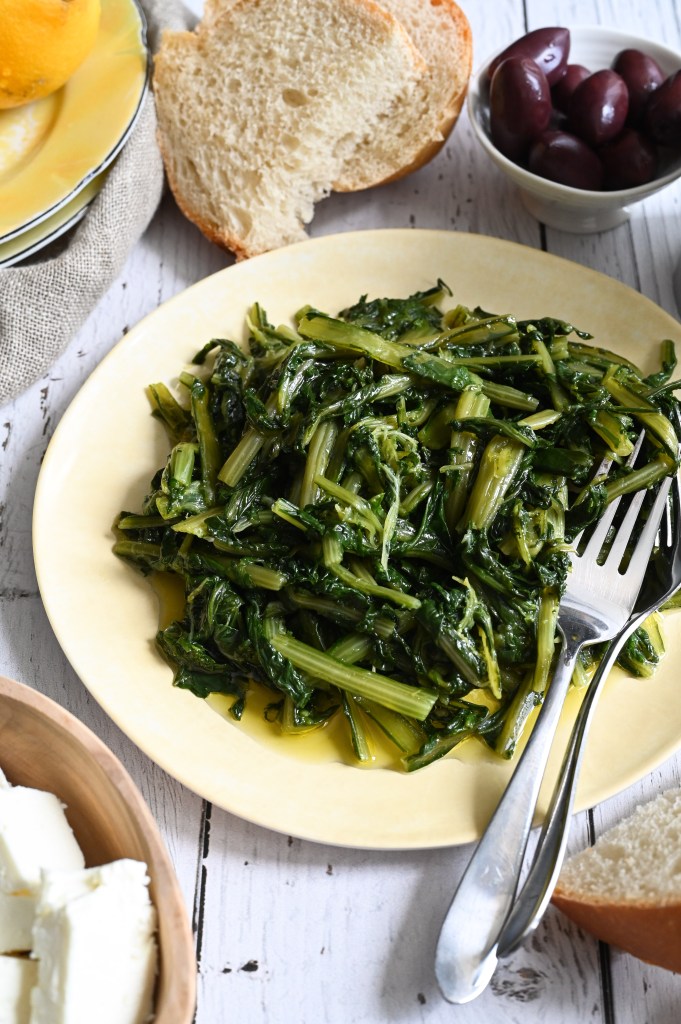
We love hearing from you! If you have made our recipes, or if you have a question or comment, or simply want to say Hi!, please leave a comment and star rating below! Also be sure to follow along with us, on Facebook, Instagram and Pinterest. We have lots of fun over there.
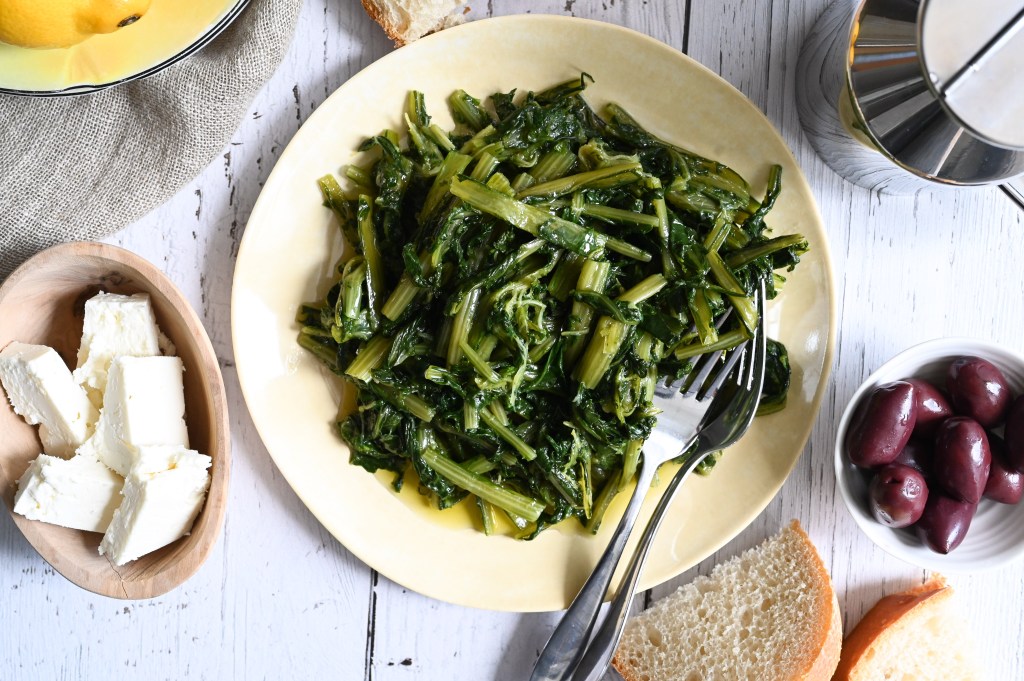
Horta (Dandelion leaves)
Equipment
- 2 large bowls to rinse the horta
- 1 large sauce pot
Ingredients
- Horta (wild dandelion greens) See notes below.
- Salt, to taste
- Lemon or lime juice, to taste
- Olive oil, to taste
Instructions
- Pick through your horta and remove any leaves which are brown or discoloured.
- Remove any roots, and excess dirt. Next, carefully wash your horta. The best way to do this is to work with two large bowls. Fill each one with water and immerse your horta, a few handfuls at a time, into the first bowl. Place your hand into the water with the horta and shake it around, almost like the agitator of a washing machine would . After you do this for about 30 seconds, move the horta over to the next bowl which is also filled with water. Empty the first bowl, and refill with water. Repeat the agitator motion in the second bowl.
- Repeat until the water left behind when you transfer your horta, is crystal clear.
- Bring a large pot of water to a boil. Add salt to taste to the water (usually we add 1 teaspoon per 4 liters of water). Once the water has come to a boil, add your horta.
- Cook, uncovered, over medium heat for approximately 20 – 25 minutes, until the horta are tender. Every 5 minutes or so, stir the horta around in the pot.
- Drain, but reserve the cooking liquid.
- Right before you are planning to serve your horta, gently drizzle with lemon juice and olive oil. You can add salt at this point as well, if you desire.
- Store the reserved liquid in the refrigerator until you are ready to drink it or use it. If you plan on drinking it as a tea, you can add a bit of honey to cut the bitterness.
- Enjoy!










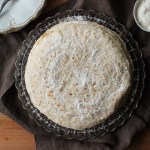


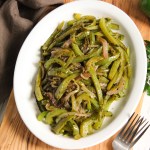








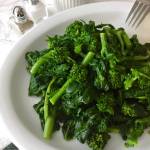



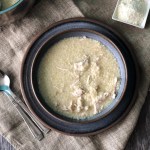

















































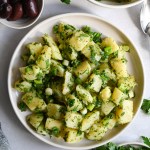






























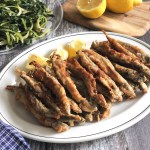
























































































































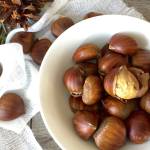



























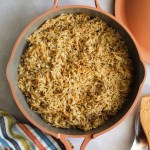




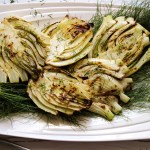













































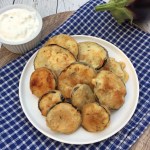

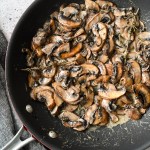









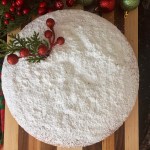





















































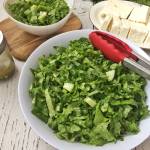












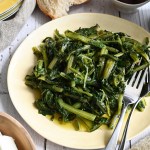
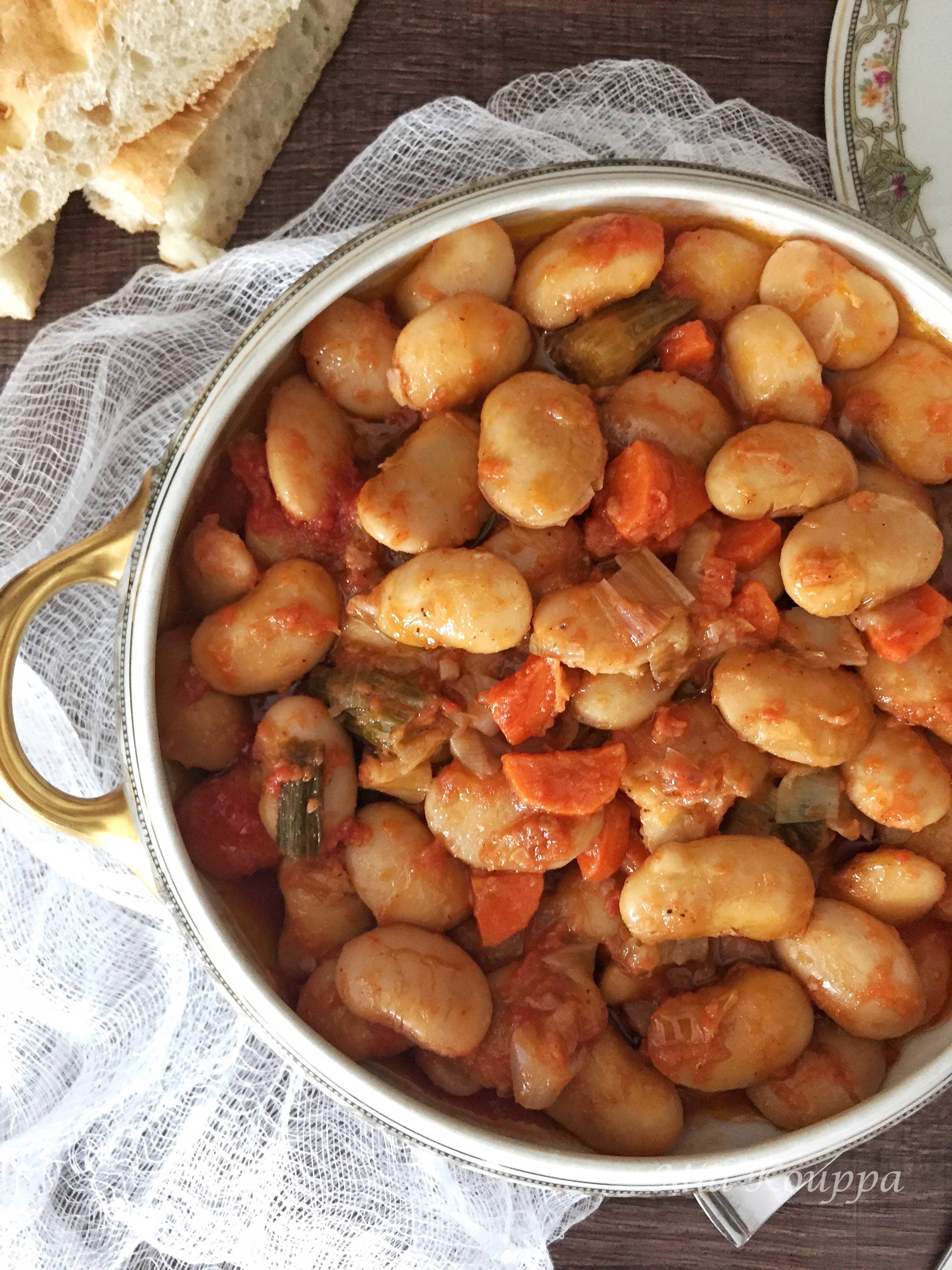

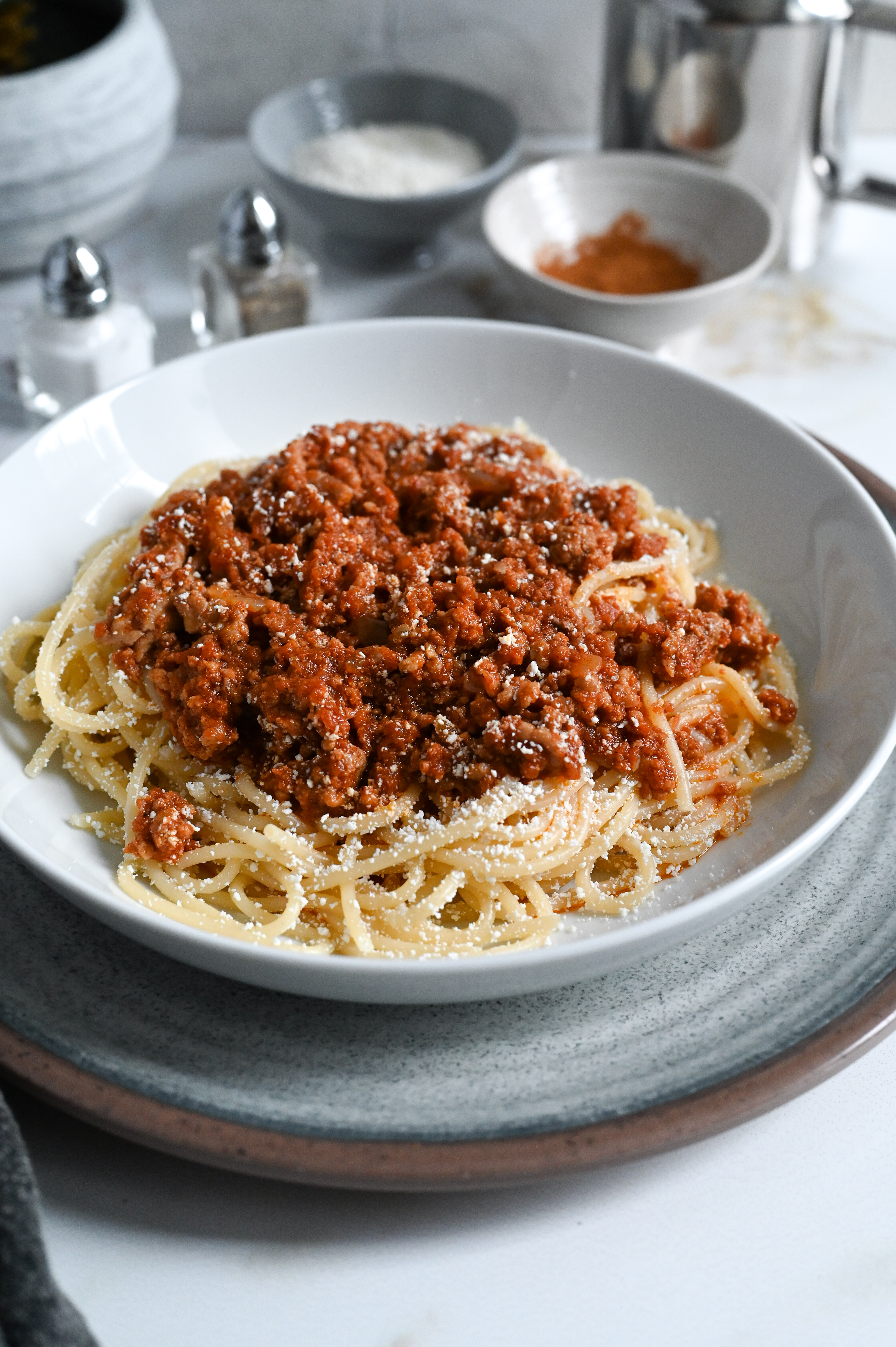

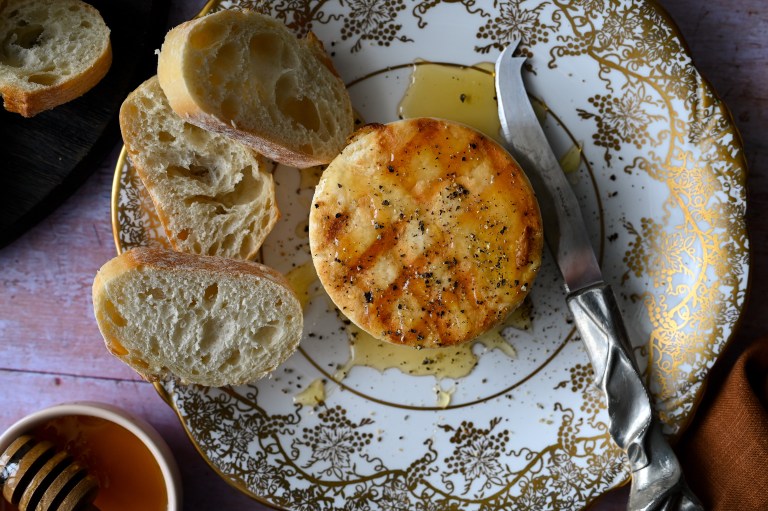


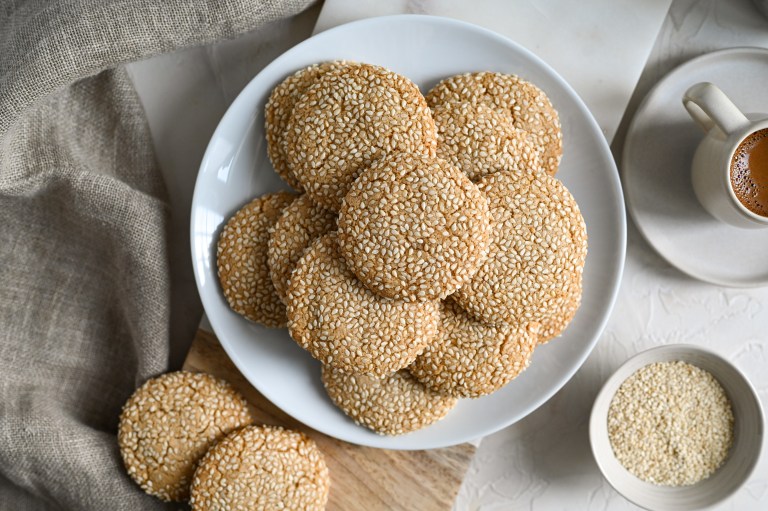



Leave a Reply